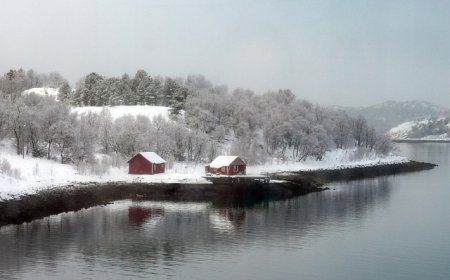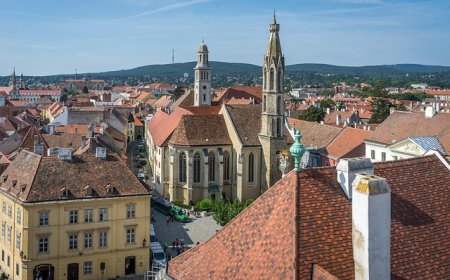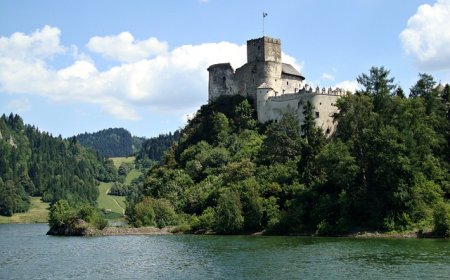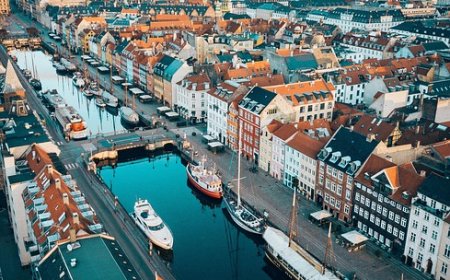Czech Republic: Geography, History, and Culture for Students
Discover the Czech Republic in this student-friendly guide. Explore its castles, traditions, cities like Prague, and rich history in the heart of Europe.
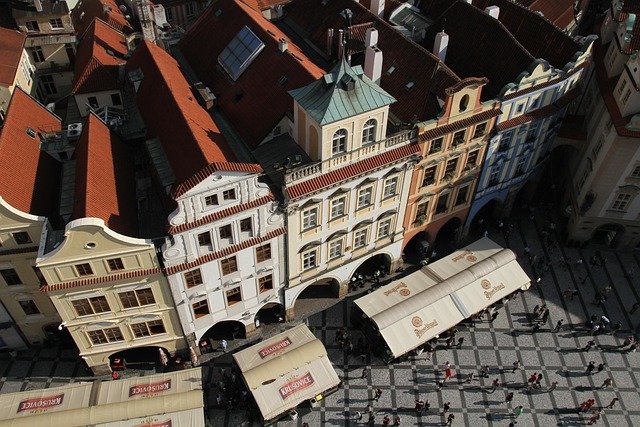
🇨🇿 Czech Republic: Castles, Culture, and Central Europe’s Hidden Gem
🗺 Introduction
The Czech Republic, also called Czechia, is a landlocked country in Central Europe filled with fairy-tale castles, charming towns, and deep-rooted traditions. Known for its well-preserved architecture and beautiful landscapes, the Czech Republic is also a country with a rich and complicated history.
Once part of powerful empires and later a communist nation, the Czech Republic is now a democratic country with a strong identity and proud culture. In this article, you’ll explore its geography, people, cities, food, and why Czechia is such a fascinating place to study and visit.
🌍 Geography and Location
The Czech Republic shares borders with Germany, Austria, Slovakia, and Poland. It sits in the heart of Europe and is shaped by rolling hills, wide valleys, thick forests, and peaceful rivers. Although it doesn’t touch the sea, its central location has made it an important meeting point for trade, culture, and ideas for centuries.
The land is made up of two main regions: Bohemia in the west and Moravia in the east. Bohemia is home to many forests, plains, and rivers like the Vltava, which flows through the capital city, Prague. Moravia has more hills and vineyards and is known for its folk music and traditions.
The Czech Republic has a continental climate, meaning it experiences all four seasons. Winters are cold and snowy, while summers are warm and sunny. Spring and autumn are especially beautiful, with colorful flowers and trees.
🏙 Cities and Regions
The capital and largest city is Prague, often called “the City of a Hundred Spires” because of its many church towers and historic buildings. Prague is known for its Old Town Square, Astronomical Clock, Charles Bridge, and Prague Castle, one of the largest castles in the world. The entire city feels like stepping into a storybook.
Other major cities include:
- Brno, a lively university city and center of science and innovation in Moravia
- Ostrava, an industrial city with museums and music festivals
- Český Krumlov, a small town with colorful houses, a riverside castle, and cobblestone streets
- Plzeň, famous as the birthplace of Pilsner beer and rich cultural events
Each region of Czechia offers something different, from mountain hikes and historic villages to modern art galleries and music halls.
👨👩👧👦 People, Language, and Culture
The Czech Republic is home to about 10.5 million people. The main language is Czech, which uses the Latin alphabet with special accents. It may be tricky to learn, but it’s an important part of the country’s identity. Most people also learn English or German in school, especially in larger cities.
Czech people are known for being proud of their culture, calm in personality, and very resourceful. They enjoy music, sports, festivals, and time spent outdoors. Family and education are highly valued, and young people are encouraged to explore art, science, and history.
Traditional folk costumes, especially in Moravia, are worn during festivals, and folk music and dance remain a strong part of regional life. The Czech lion, featured on the national coat of arms, represents strength and courage.
🍽 Food and Traditions
Czech cuisine is rich and filling, based on meats, sauces, bread, and potatoes. Many traditional meals are served with dumplings and gravy.
Popular Czech dishes include:
- Svíčková, marinated beef with creamy vegetable sauce and dumplings
- Vepřo knedlo zelo, roast pork with sauerkraut and dumplings
- Koláče, sweet pastries filled with fruit or cheese
- Guláš, a thick beef stew with paprika
- Chlebíčky, open-faced sandwiches topped with eggs, meats, or vegetables
Czech people enjoy celebrating holidays like Christmas, Easter, and St. Nicholas Day with songs, decorations, and special foods. One unique spring holiday is Pomlázka, where boys gently whip girls with decorated willow branches as part of a traditional blessing.
🏛 History of the Czech Republic
The history of the Czech Republic goes back over a thousand years. In medieval times, the land was part of the powerful Kingdom of Bohemia, ruled by kings like Charles IV, who helped build Prague into a cultural center of Europe.
Later, the region became part of the Austro-Hungarian Empire, and after World War I, it joined with Slovakia to form Czechoslovakia. During World War II, the country was taken over by Nazi Germany, and after the war, it came under communist rule.
In 1989, the Velvet Revolution, a peaceful protest movement, led to the end of communism. A few years later, in 1993, Czechoslovakia peacefully split into two countries: the Czech Republic and Slovakia.
Today, the Czech Republic is a proud member of the European Union and is known for its democracy, creativity, and rich cultural traditions.
🌿 Nature and Environment
Nature is deeply appreciated in the Czech Republic. The country has national parks, mountain ranges, caves, and river valleys perfect for hiking, cycling, and skiing. The Bohemian Forest in the southwest and Krkonoše Mountains in the north are popular for outdoor adventures.
Animals such as deer, wild boars, lynx, and eagles can be found in its forests. Rivers like the Elbe and Vltava support birdlife and connect towns across the countryside.
Czechs care about protecting the environment. Recycling is common, and many cities encourage walking, biking, and using public transportation. Renewable energy and forest conservation are growing in importance.
🧠 Why the Czech Republic Matters
The Czech Republic is a country where history, nature, and creativity come together. Its castles, stories, music, and peaceful revolutions show how people can protect what they love and create a better future. Whether you’re walking through a medieval square or enjoying a local festival, Czechia has something to teach and inspire every curious learner.
👧🧒 Kid-Friendly Summary
The Czech Republic is a small country in Europe full of castles, cool towns, and mountain adventures. People there speak Czech and enjoy yummy foods like dumplings and sweet pastries. The capital city, Prague, has old buildings that look like they came from a fairy tale. Long ago, it was part of a big kingdom and later became a part of Czechoslovakia. Now, it’s its own peaceful country where people love music, art, and nature. There are even fun festivals where people wear colorful clothes and dance!
📚 Vocabulary List
| Word | Definition |
|---|---|
| Bohemia | A historical region in the western part of the Czech Republic |
| Moravia | The eastern region of the Czech Republic, known for wine and folk music |
| Prague Castle | A large historic castle in Prague, considered one of the biggest in the world |
| Continental climate | A type of weather with warm summers and cold, snowy winters |
| Velvet Revolution | A peaceful protest that led to the end of communism in Czechoslovakia |
| Dumplings | Soft dough balls served with sauce or stew, common in Czech meals |
| Folk costume | Traditional clothing worn for festivals and special occasions |
| Czechoslovakia | The former country that included the Czech Republic and Slovakia |
🧠 Interactive Quiz: Test Your Knowledge of the Czech Republic
1. What is the capital of the Czech Republic?
A) Brno
B) Plzeň
C) Prague
D) Ostrava
2. What two main regions make up the Czech Republic?
A) Bavaria and Vienna
B) Bohemia and Moravia
C) Hungary and Slovakia
D) Central and Eastern
3. What kind of climate does the Czech Republic have?
A) Desert
B) Tropical
C) Continental
D) Polar
4. What language is spoken in the Czech Republic?
A) German
B) Czech
C) Polish
D) English
5. What is served with many traditional Czech dishes?
A) Dumplings
B) Rice
C) Pizza
D) Fries
6. What peaceful protest helped end communism in 1989?
A) Spring March
B) Velvet Revolution
C) Czech Uprising
D) Unity Walk
7. What is the name of the large castle in Prague?
A) Wawel Castle
B) Hohenzollern Castle
C) Prague Castle
D) Bran Castle
8. What is Czechia another name for?
A) Slovakia
B) Moravia
C) Czech Republic
D) Austria


















































